
欢迎访问南京市中山陵园管理局网站

在世界文化遗产明孝陵文武方门外,树立着一块100多年历史的石碑。石碑上,以日、英、法、德、意、俄六种文字镌刻了一段特别告示,旨在劝导外国游客文明旅游,不要损坏文物古迹。
In front of the main palace gate at the imperial Xiaoling Mausoleum, a UNESCO World Heritage Site, stands a stone stele that has weathered more than a hundred years of history. Carved in six languages — Japanese, English, French, German, Italian, and Russian — it carries a “Special Notice” reminding international visitors to be respectful and refrain from damaging cultural relics.
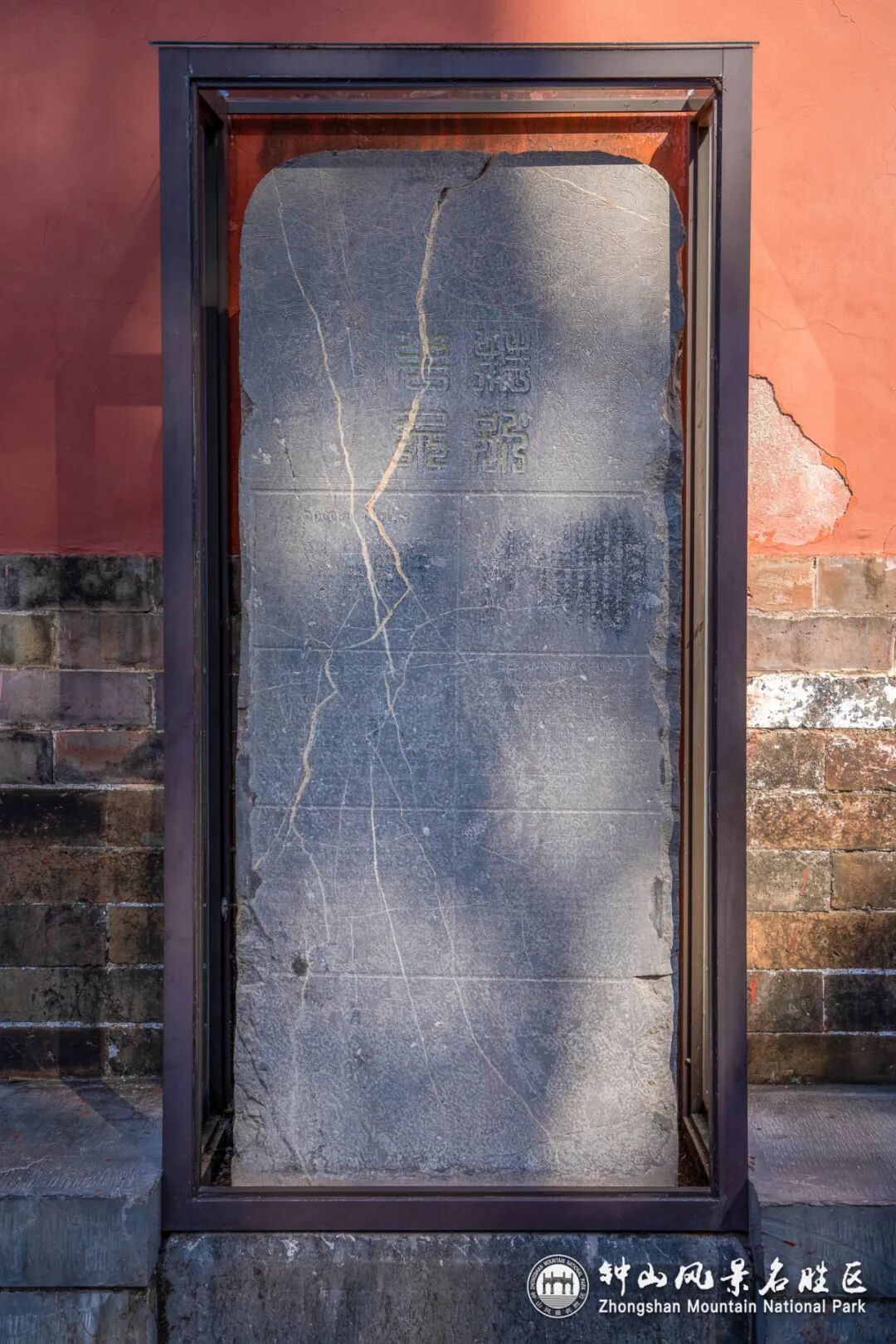
六国文字特别告示碑
The “Special Notice” stele bears inscriptions in six languages, urging respect for cultural heritage.
特别告示碑高1.50米,宽0.63米,厚0.15米。碑额篆书“特别告示”四字,周围饰云龙纹。该碑由两江洋务总局汪道台和江宁府杨知府于清宣统元年(1909)树立。
The stele stands 1.5 meters tall, 0.63 meters wide, and 0.15 meters thick. The words “Special Notice” are engraved in seal script at the top, framed by cloud-and-dragon patterns. It was erected in 1909, during the first year of Emperor Xuantong’s reign, by Wan Taotai of the Liangkiang Bureau of Foreign Affairs and Yang, Prefect of Kiangning.
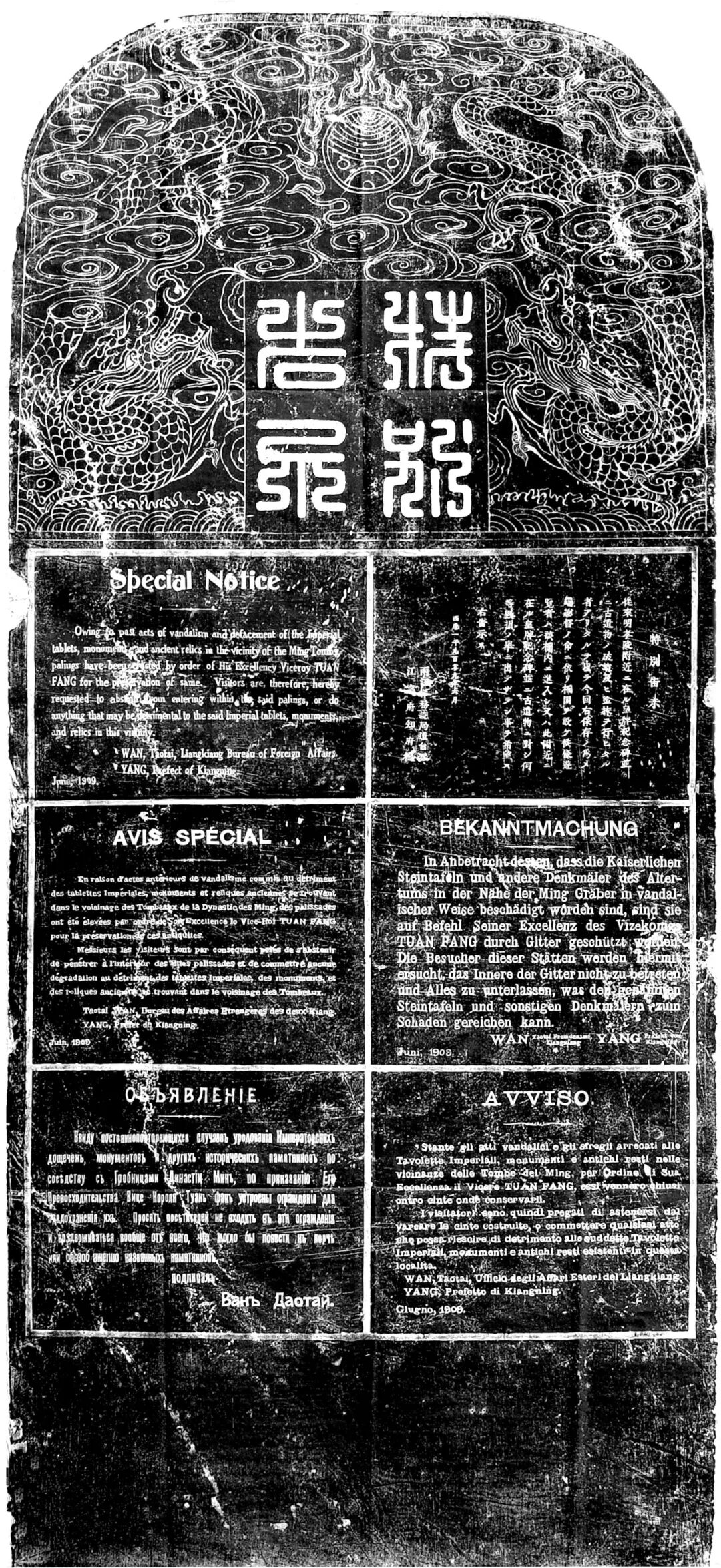
六国文字特别告示碑拓片
A rubbing taken from the multilingual “Special Notice” stele preserves the original inscriptions in six languages.
近日,我们邀请专家对告示碑上的六国文字进行了辨认,并从不同语言译回中文。
Recently, we invited experts to identify the texts in six different languages inscribed on the stone tablet and translation each version into Chinese.
日文
特別告示
後來明孝陵附近ニ在ル皇碑紀念碑並ニ古遺物ノ破壊及ビ塗抹ヲ行ヒタル者アリタルヲノデ今回右保存ノ為メ奉総督ノ命ニ依リ柵囲ヲ設ケ候條遊覧者ハ該柵内ニ進入シヲハ此附近ニ在ル皇碑紀念碑並ニ古遺物に對シ何等毁損ノ舉ニ出デザラシ事ヲ希望ス
右告示ス
西暦一千九百年零九年六月
両江洋務総局道台 汪
江寧府知府 楊
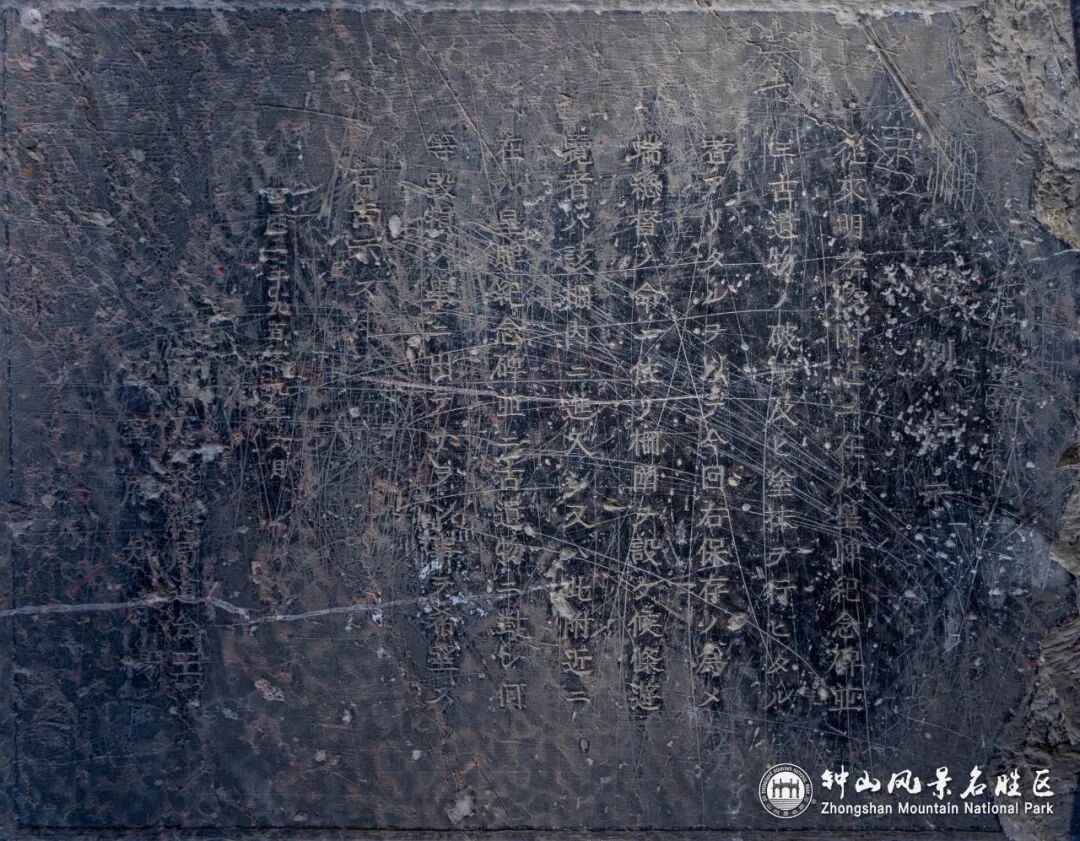
日译中
特别通告
鉴于过去有人对明孝陵附近的皇碑及古迹文物存在破坏及涂抹等行为,奉两江总督之命,为保护上述文物,特设置围栏。希望所有访客一律不得擅自进入该围栏范围内,亦不得做出任何可能损害皇碑及古迹文物之行为。
特此通告。
1909年6月
两江洋务总局道台 汪
江宁府知府 杨
英文
Special Notice
Owing to past acts of vandalism and defacement of the Imperial tablets, monuments, and ancient relics in the vicinity of the Ming Tombs, palings have been erected by order of His Excellency Viceroy TUAN FANG for the preservation of same. Visitors are, therefore, hereby requested to abstain from entering within the said palings, or do anything that may be detrimental to the said Imperial tablets, monuments, and relics in this vicinity.
WAN, Taotai, Liangkiang Bureau of Foreign
Affairs.
YANG, Prefect of Kiangning.
June, 1909
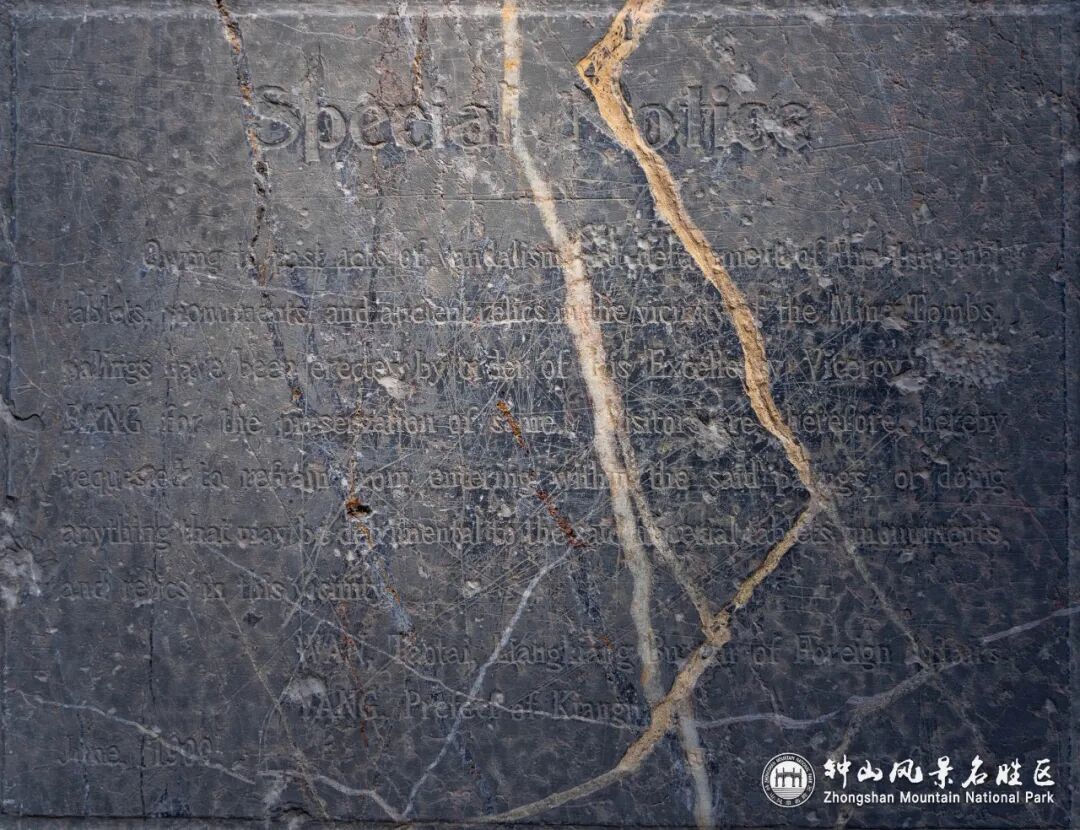
英译中
特此告示
盖因明孝陵附近皇室碑文、古迹及文物屡遭破坏污损,今奉两江总督端方大人之命,已设围栏以资防护。兹特告访客,切勿擅入围栏之内,或为任何有损上述皇室碑文、古迹及文物之举。
两江洋务总局汪道台
江宁杨知府
1909年6月
德文
Bekanntmachung
In Anbetracht dessen, dass die Kaiserlichen Steintafeln und andere Denkmäler des Altertums in der Nähe der Ming Gräber im vandalischer Weise beschädigt worden sind, sind sie auf Befehl seiner Exzellenz des Vizekönig TUAN FANG durch Gitter geschützt werden. Die Besucher dieser Stätten werden hiermit ersucht, das Innere der Gitter nicht zu betreten und Alles zu unterlassen, was den genannten Steintafeln und sonstigen Denkmälern zum Schaden gereichen kann.
WAN Taotai, Fremdenamt, Liangkiang
YANG, Präfekt von Kiangning
Juni, 1909

德译中
公告
鉴于明孝陵附近皇室石碑及其他古代遗迹遭人任意毁伤,奉总督端方大人之命,现加设栅栏予以保护。特此告知来访者,请勿进入栅栏内部,并请避免一切可能对上述石碑及其他遗迹造成损害之行为。
两江洋务总局汪道台
江宁杨知府
1909年6月
法文
AVIS SPECIAL
En raison d’actes antérieurs de vandalisme commis au détriment des tablettes Impériales, monuments et reliques anciennes se trouvant dans le voisinage des Tombeaux de la Dynastie des Ming, des palissades ont été élevées par ordre de Son Excellence le Vice-Roi TUAN FANG pour la préservation de ces antiquités.
Messieurs les visiteurs sont par conséquent priés de s’abstenir de pénétrer à l’intérieur des dites palissades et de commettre aucune dégradation au détriment des tablettes Impériales, des monuments, et des reliques anciennes se trouvant dans le voisinage des Tombeaux.
Taotal WAN, Bureau des Affaires Etrangères des deux-Kiang.
YANG, Préfet de Kiangning.
Juin, 1909

法译中
特别告示
前因帝陵碑碣及明陵附近古迹屡遭损毁,奉两江总督端方大人谕令,为保护古物,特此修筑围栏。
敬请各位游客勿入前述围栏界内,并请勿损及帝陵碑碣与明陵周边古迹文物。
两江洋务总局汪道台
江宁府杨知府
1909年6月
意文
AVVISO
Stante gli atti vandalici e gli sfregi arrecati alle Tavolette Imperiali, monumenti e antichi resti nelle vicinanze delle Tombe dei Ming, per ordine di sua eccellenza il Vicere Tuan Fang, essi vennero chiusi entro cinte onde conservarli.
I visitatori sono quindi pregati di astenersi dal varcare le cinte costruite, o commettere qualsiasi atto che possa riescire di detrimento alle suddette Tavolette Imperiali, monumenti e antichi resti in questa località.
Wan, Taotai, Ufficio degli Affari Esteri del Liangkiang
Yang, Prefetto di Kiangning.
Giugno 1909
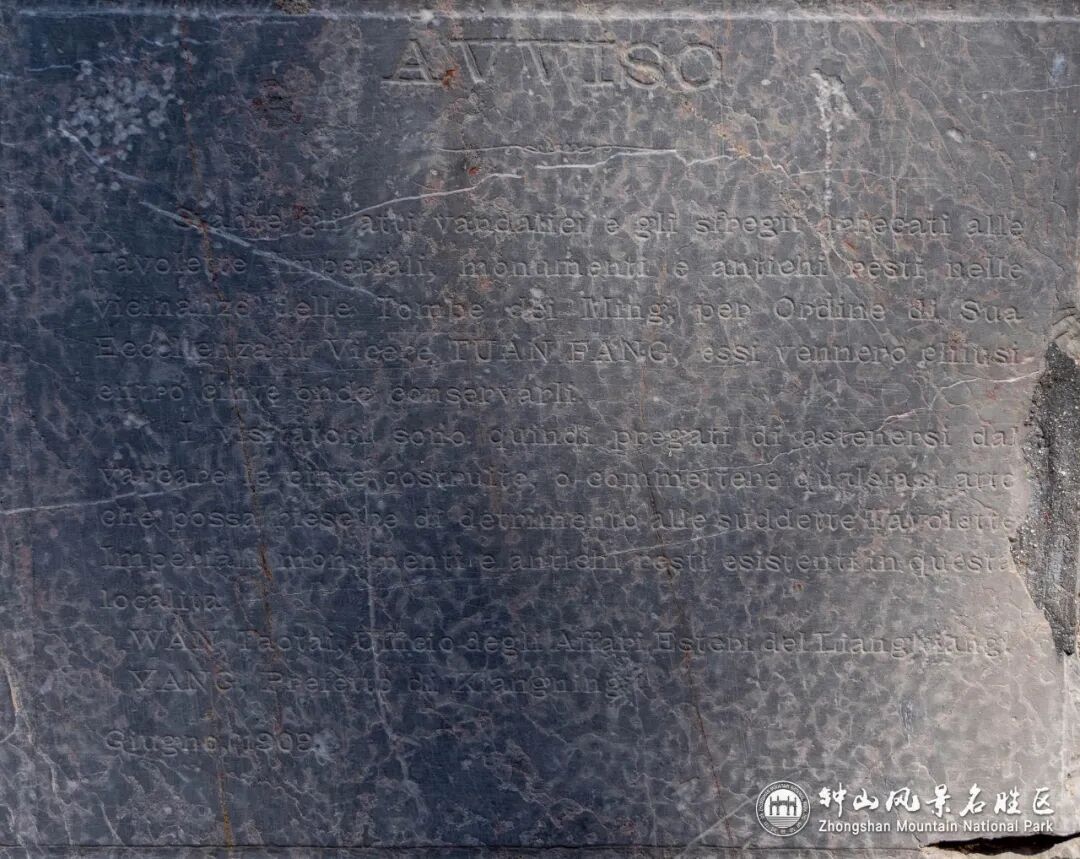
意译中
通告
鉴于近来有不法之徒对位于明朝陵墓附近的御碑、纪念性建筑及古代遗迹进行破坏与污损,奉两江总督端方大人之命,现已对上述地区设置围栏,以便妥善保护。
请来访者勿擅自跨越围栏,亦勿从事任何可能损坏御碑、纪念建筑或古遗迹的行为。
两江洋务总局汪道台
江宁杨知府
1909年6月
俄文
ОБЪЯВЛЕНІЕ
Ввиду постоянноповторяющихся случаевъ уродованія Императорскихъ дощеченъ, монументовъ и другихъ историческихъ памятниковъ по сосѣдству съ Гробницами Династіи Минъ, по приказанiю Его Превосходительства Вице Короля Туанъ фанъ устроены огражденія для предохраненія ихъ. Просятъ посѣтителей не входить въ эти огражденія и воздерживаться вообще отъ всего, что могло бы повести къ порчѣ или обезображению названныхъ памятниковъ.
Подписалъ
Ванъ Даотай.

俄译中
特别告示
前因帝陵碑碣及明陵附近古迹屡遭损毁,奉两江总督端方大人谕令,为保护古物,特此修筑围栏。
敬请各位游客勿入前述围栏界内,并请勿损及帝陵碑碣与明陵周边古迹文物。
两江洋务总局汪道台
江宁府杨知府
1909年6月
晚清国门洞开,前来南京的外国游人也越来越多,明孝陵的建筑和石刻因为乱涂画被破坏,令地方政府困扰。
By the late Qing Dynasty (1644-1911), as China opened further to the world, Nanjing began to attract increasing numbers of international visitors. However, the growing tourism also brought problems — graffiti and vandalism on the mausoleum’s buildings and stone carvings became a serious concern for the local government.

组团游玩明孝陵的外国水兵
Foreign sailors visit the imperial Xiaoling Mausoleum.
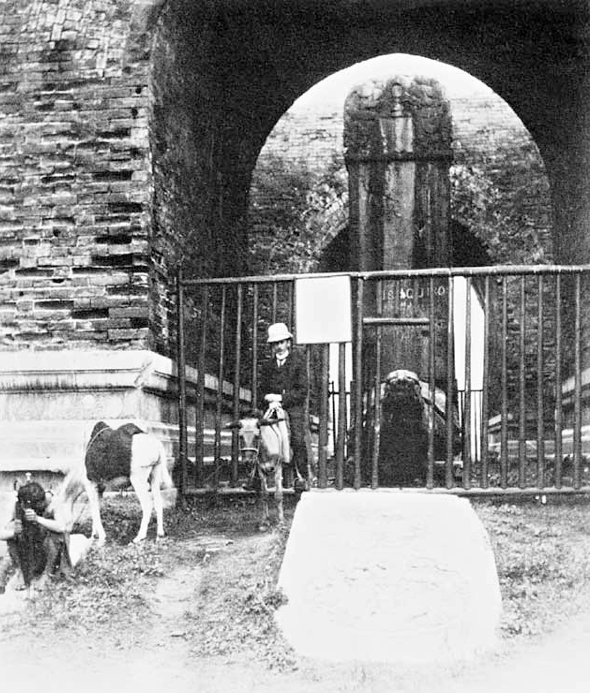
晚清“神功圣德碑”上清晰的外文刻画
Foreign inscriptions are clearly visible on the “Shengong Shengde” Stele from the late Qing period.

神功圣德碑
the “Shengong Shengde” Stele
考虑到碑殿内康熙帝和乾隆帝御笔亲题的碑刻尚存,这对于清朝地方政府而言,无疑是重中之重。而外国人往往不识中文,更对中国历史知之甚少,因此,立碑警示他们不要乱涂乱画显得尤为重要。
Inside the main hall of the mausoleum are stone tablets inscribed with the calligraphy of Emperors Kangxi and Qianlong. To the local Qing officials, protecting these imperial inscriptions was of utmost importance. Yet many international visitors could not read Chinese and knew little about Chinese history. For this reason, the multilingual stele was erected to warn and educate them not to deface cultural relics.
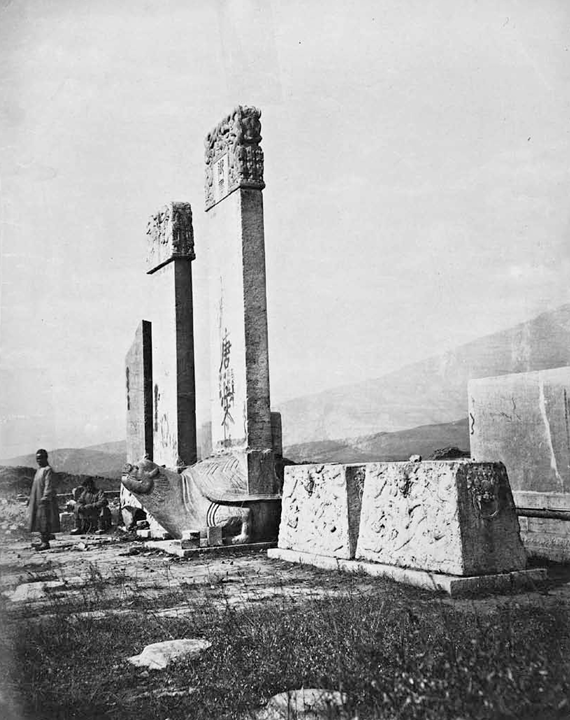
明孝陵“治隆唐宋”碑,拍摄于1866-1869年之间
是目前已知明孝陵最早的照片
The “Zhilong Tang Song” Stele, photographed between 1866 and 1869, is the earliest known image of the imperial Xiaoling Mausoleum.

治隆唐宋碑
the “Zhilong Tang Song” Stele
从历史照片来看,树立特别告示碑后,当时的地方政府也以高大的木栅栏将重点的文物、石刻进行围护。
Historical photos show that after the “Special Notice” was erected, local authorities also enclosed key relics and stone carvings with tall wooden fences to protect them.
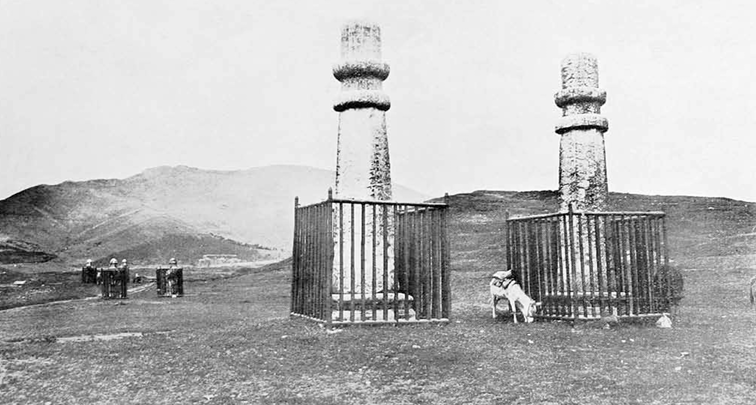
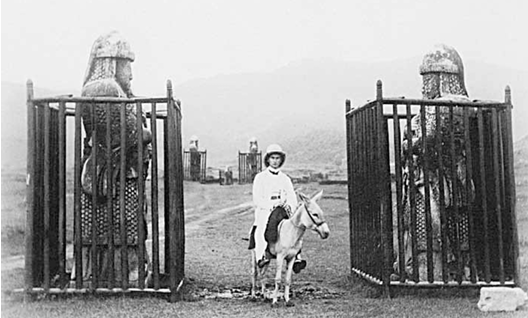
用木栅栏围住的明孝陵神道石刻
Wooden fences were erected to protect the stone statues along the Sacred Road of the imperial Xiaoling Mausoleum.
尽管高大的围栏有碍观瞻,但它们对这些遗迹的保护效果是积极的。立石碑、设围栏的举措,也彰显了当时人们尊重历史、保护文物、传承文化的决心。
Though the fences somewhat blocked the view, they proved effective in preventing damage. Together with the multilingual stele, they embodied the values of that time — a deep respect for history, a growing awareness of heritage preservation, and a determination to protect cultural treasures for future generations.
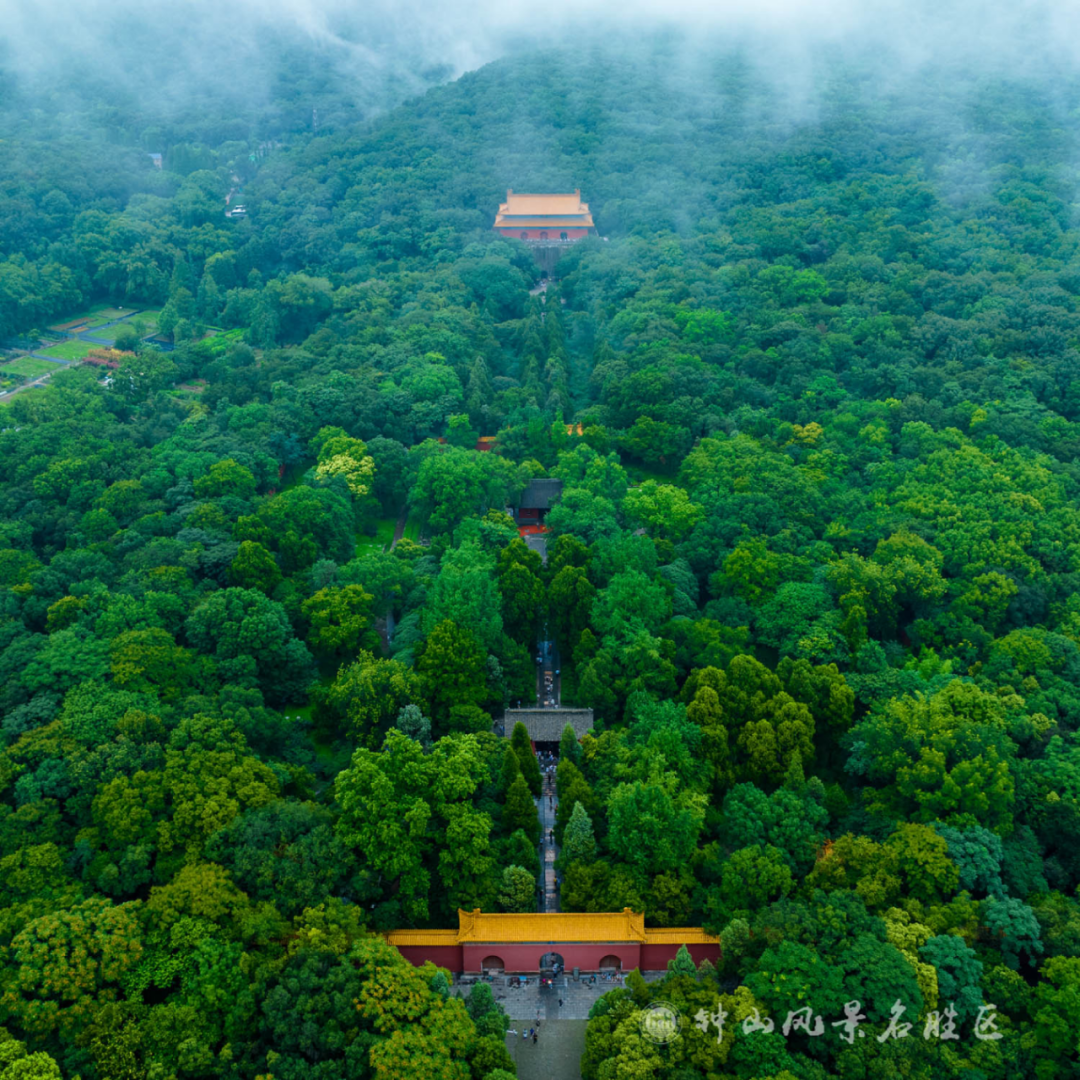
一个彩蛋:文言文版
特告
盖明孝陵近畿,皇室碑碣、古迹文物,乃国朝名迹,累世相传,兹因屡遭损毁污亵,殊堪痛惜。今奉两江总督端方大人札饬,业已竖设围栏,以资守护,妥为防闲。今晓谕诸色人等:凡至陵域访客,务须恪遵约束,切勿擅越围栏,亦不得有任何损毁污亵前项皇室碑碣、古迹文物之事,尔等当各宜自爱,共相警惕。
两江洋务总局汪道台
江宁府杨知府
一九零九年六月
推文翻译| 中国外文局翻译院
碑文翻译 |南京弘腾翻译有限公司
日文译者:蒋豪
德文译者:王健
意文译者:李思佳
英文译者:骈亚男
法文译者:袁丽萍
俄文译者:王春菊
文言文:史华楠
摄影 |贲放
参考资料 |王韦《“特别告示”碑中的两江洋务总局道台》,大众考古,2020.12